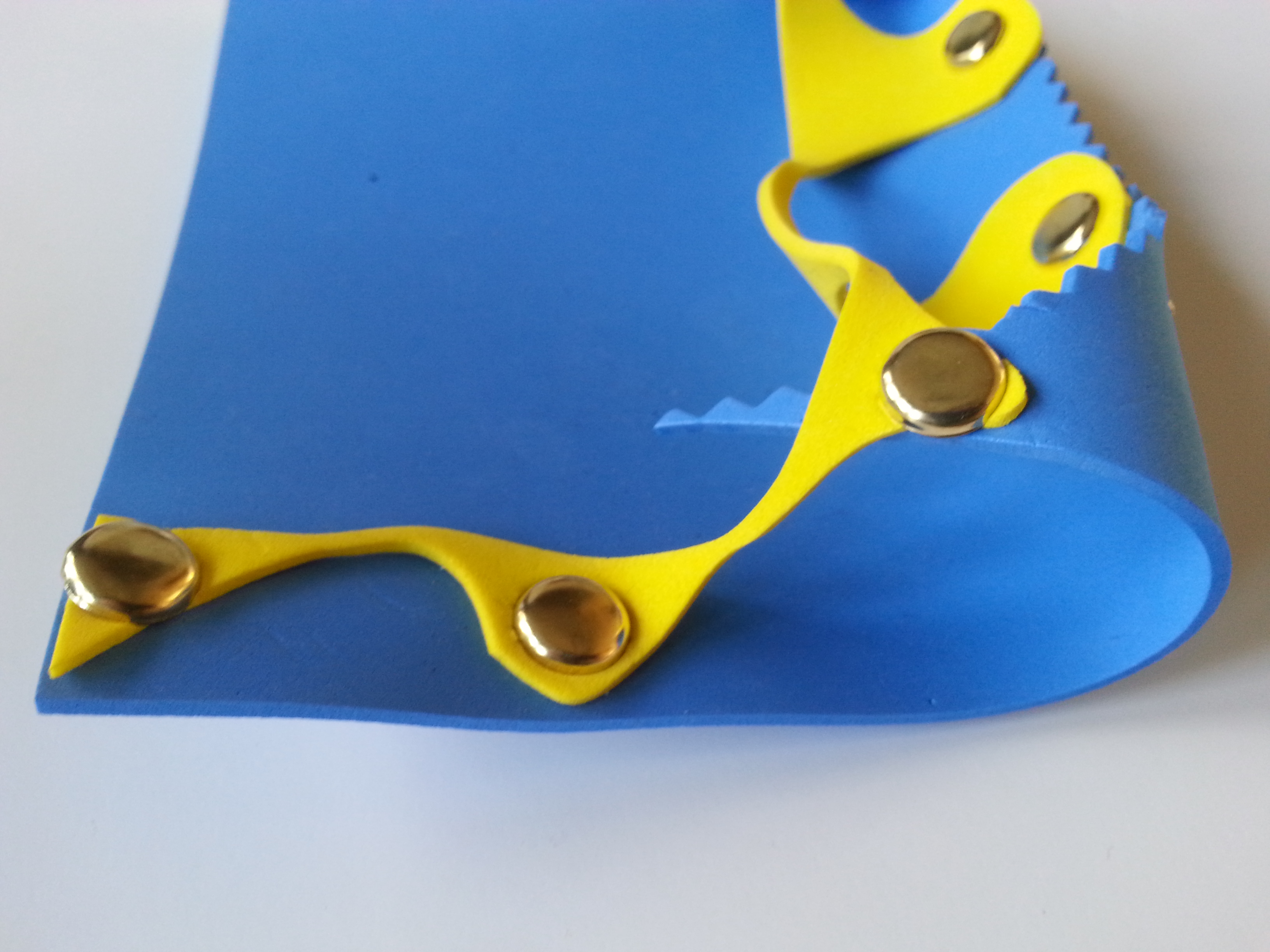Of the two sets of techniques I was initially much more comfortable with the joining exercises. I quickly became frustrated with the early wrapping exercises as it was difficult to find subjects with good anchoring points, meaning that I felt I had much less control over the nature of the finished piece. I was repeatedly thwarted by wraps coming loose or undone, or not being able to wrap the area I wanted to because there was no appropriate anchor point. Simply covering the slope of the spoon for example, was an exercise in extreme patience and I found this distracting, interfering with the process and taking away my control over the result and leaving me ultimately dissatisfied. However, this improved significantly in the extended exercise and to some extent with wrapping the jug. From this I have learned that it’s about matching the right wrapping material to the right body to be wrapped.
With the joining exercises I felt that these offered more scope for experimentation and use of different materials. I particularly enjoyed playing with the concept of “what is joining what”, joining the “joining materials” together and using what would normally be considered the body of a piece to be “the join”.
For example, using layered and coloured PVA as both the material and the means of joining together was exciting to explore. I also experimented with making duct tape both the body material and the join. I can see scope for extending this into other “sticky” media, layering textural moulding media such as Golden paste, sculptural pastes and Poproc to create bolder, more exciting connected pieces. I can also see scope for embedding objects in the moulding material and creating further textures, surfaces and body materials.
Working with funky foam is satisfying as it is very versatile, can be cut easily, shapes well, can be stitched and makes good stamps for printing. It isn’t very suited to bending or folding so this needs to be borne in mind. Bubble wrap is also one of my “go-to” materials – for texture, stitching into, printing with, padding and moulding.
In the joining exercises I used many different materials, producing some satisfying results in terms of colour, shape and texture. There were a number of samples that produced great shapes. I have been exploring these as a resource for repeating patterns with a variety of media. I’ve used the curved bubble wrap and stitching to develop into prints and stamps, stencils and resists. The shapes in the straight edged sample with the jewellery wire have been used for patterning and rubbings.
Although I preferred the joining exercises, I did like the results of the wrapped tights and jewellery wire. This was quite unexpected. The silk fabric with wool yarn gave produced satisfying textural qualities and the bright colours of the silk were a good contrast with the soft hues of the hand-dyed wool. The twine and masking tape was very tactile and gave interesting shapes and textures.
Having spent some time considering the work of my research artists, this led me into the extended samples in parts two and three. I hope this can be seen in my pieces. I found these much more satisfying and think as I research more artists and visit exhibitions, watch arts programmes, it is developing my ability to understand how to use other artists’ work as a source of inspiration.
